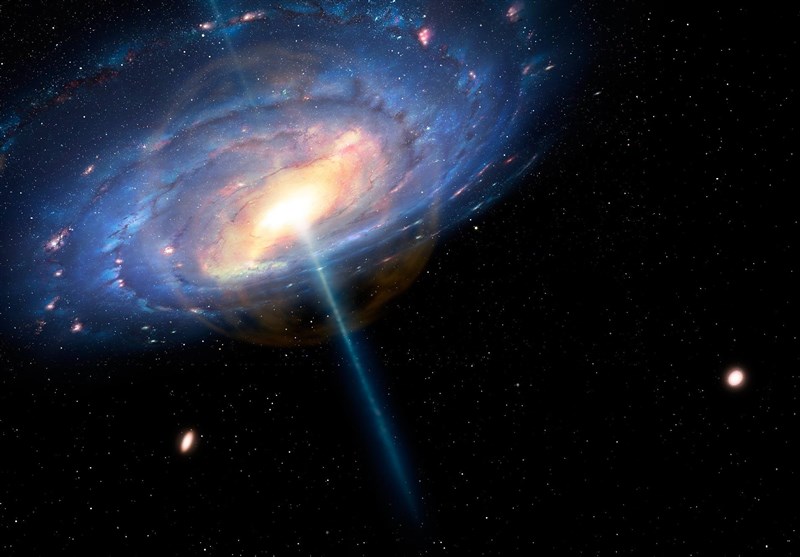Ancient Quasar May Be Remains of One of Universe's Earliest Stars
TEHRAN (Tasnim) – Scientists taking a look at the second-most distant observed quasar believe it's actually the remnants of one of the universe's earliest stars – the so-called Population III stars that seeded the early universe with material that eventually formed life.
Working with the National Science Foundation's Gemini North Telescope in Hawaii, the team found evidence using a new method of estimating the various elements detected in near-infrared spectrographs. The trace gases surrounding quasar ULAS J1342+0928 have an odd magnesium-to-iron ratio, the team said, that could only be the result of one of the universe's earliest stars going supernova, according to current theory.
If the methodology is correct, the team appears to have discovered a better way to search for distant first-generation stars and their remnants, as well as providing clues that could help "explain how matter in the universe evolved into what it is today, including humans," the NSF said.
According to the Big Bang Theory of cosmology, there wasn't much around in the moments after the universe came into being – only hydrogen, helium and lithium emerged in the immediate aftermath of the origin of everything.
Elements heavier than helium probably weren't created until stars formed around 100 million years after the Big Bang. Then some more waiting, as it wasn't until those stars collapsed and went supernova that the heavy elements created in their cores were ejected into the void to further complicate the universe.
Thus, the earliest stars – known as Population III – were likely composed of just hydrogen and helium. And they were gigantic – some of them hundreds of times larger than our Sun. However, they also burnt out much more quickly.
But Pop III stars are purely theoretical, having never been observed – their mass means they would have collapsed into black holes and quasars long ago. Quasars just like ULAS J1342.
Recent advances in cosmological simulations have led to attempts to predict the observability of Pop III star remnants, and ULAS J1342 is considered a strong contender, the research team argued in their paper.
Because Pop IIIs had to create the heavy metals they eject, the gas clouds surrounding their remnants should let distinct wavelengths of light through. Based on their observations, the team believes the second-most distantly observed quasar to have been a Pop III star that once had a mass 280 times greater than the Sun, and was likely formed right around 100 million years after the Big Bang – or roughly 13.6 billion years ago.
This isn't a final verdict on the existence of Pop III stars, though – the team even included the word "potential" in the paper's title. To see if the data holds up, the NSF said, a lot more observations will be required to see if similar characteristics exist in other stellar objects.
Still, said paper co-author and University of Notre Dame astronomer Timothy Beers, "we now know what to look for." The team's research opens a pathway, Beers said, toward better understanding where our star stuff may have got its start.






